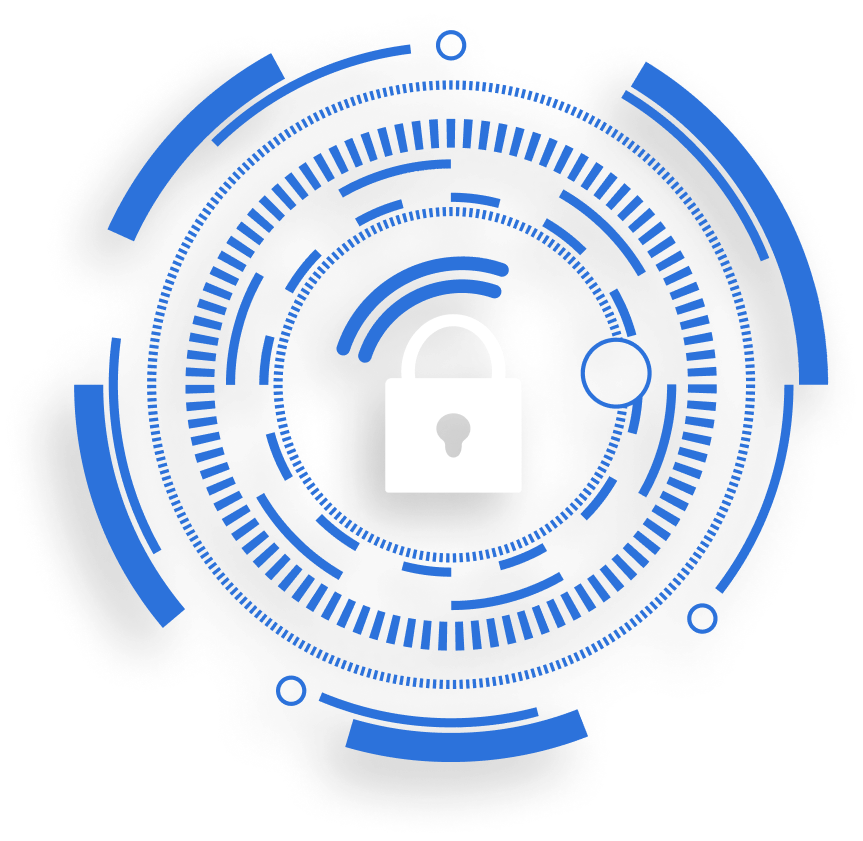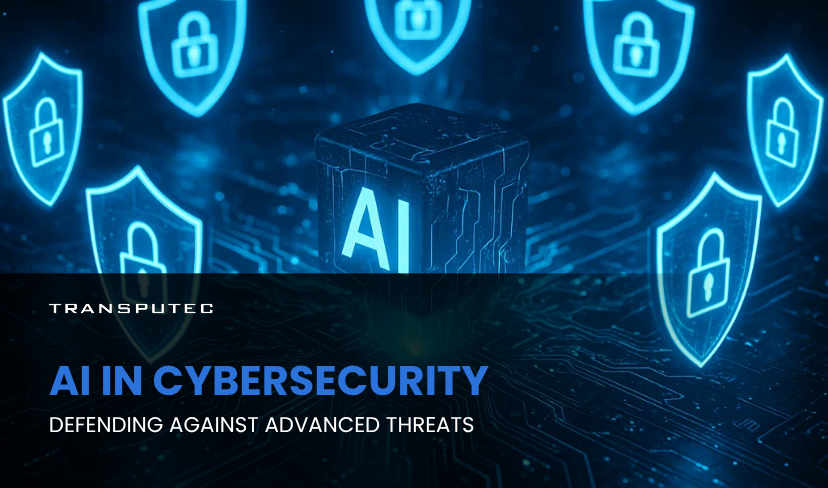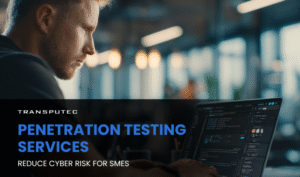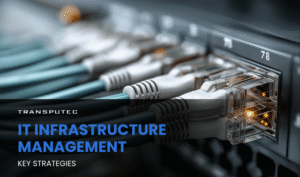Written by KRITIKA SINHA | MARKETING
Your firewall wasn’t fast enough. The malware had already breached your system before your IT team even had time to blink. Your customers’ data? Compromised. Your reputation? Under attack. It’s not just a story; this is the daily reality for countless businesses across sectors.
Sophisticated cybercriminals are no longer operating from basements with outdated code; they’re deploying artificial intelligence, deep learning, and autonomous scripts that adapt in real time. Business owners and IT teams are struggling to keep pace, stuck using legacy systems and manual processes in a battlefield that has drastically evolved.
But there is good news. AI in Cybersecurity is not just a buzzword; it’s the game-changer we’ve been waiting for. In this blog, we’ll break down how intelligent systems are revolutionising cyber defence, backed by data, real-world applications, and insights from experts. You’ll also discover how Transputec leverages cutting-edge AI to protect clients from evolving cyber threats. Stay with us; we’re unpacking powerful knowledge you can apply today.
Why Traditional Cybersecurity is Failing?
Cybercrime is expected to cost the world $10.5 trillion annually by 2025 (Cybersecurity Ventures). That’s more than the combined GDPs of Germany and Japan. Businesses relying on traditional rule-based systems, manual incident response, reactive monitoring, and static threat detection are dangerously outpaced.
Key problems with traditional security:
- Delayed response times: Manual threat detection can take 280 days on average to identify and contain a breach (IBM Cost of a Data Breach Report).
- Human error: Over 88% of data breaches are caused by employee mistakes.
- Insufficient pattern recognition: Legacy systems cannot detect zero-day threats or behaviour anomalies.
These shortcomings make it clear: conventional tools are ill-equipped to fight dynamic cyber threats. Enter AI in Cybersecurity.
AI in Cybersecurity: What It Really Means
AI in Cybersecurity involves using machine learning, natural language processing, and deep neural networks to identify, predict, and neutralise threats autonomously.
1. Data-Driven Threat Detection
AI systems analyse vast amounts of data (network logs, user behaviour, files, etc.) to identify patterns associated with malicious activity. It moves beyond static signatures and finds threats based on anomalies.
2. Machine Learning and Adaptability
Unlike rule-based tools, machine learning models evolve. As they are exposed to new data, they learn and improve, becoming better at recognising emerging threats.
3. Automation of Response
AI doesn’t just identify threats—it can act on them. It can isolate affected systems, block malicious IPs, or initiate backups without human intervention, saving precious time during an attack.
4. Behavioural Analytics
AI profiles every user and system to establish a baseline of “normal” behaviour. When something deviates, like unusual logins or data downloads, AI flags it immediately.
5. Threat Intelligence Integration
AI tools incorporate global threat intelligence feeds, allowing them to recognise and prepare for emerging global threats even before they target your business.
The Real Impact of AI in Cybersecurity
1. Rapid Threat Detection and Mitigation
AI reduces the time to detect and contain a breach dramatically. What used to take weeks or months now takes minutes or even seconds.
2. Reduction of False Positives
Traditional systems often overwhelm security teams with alerts. AI refines these by learning context, ensuring only genuine threats are escalated, and reducing alert fatigue.
3. Round-the-Clock Monitoring
AI systems don’t sleep; they monitor 24/7, ensuring your infrastructure is always protected, even outside business hours.
4. Handling of Large-Scale Data
AI can process and analyse terabytes of security data daily, which is impossible for human analysts, making it ideal for large or complex environments.
5. Incident Prediction
Advanced models predict which assets are likely to be targeted or where vulnerabilities exist, enabling preemptive action.
Ready to Strengthen Your Defences with AI?
Connect with us today for our free consultation!
AI in Cybersecurity for Small and Medium Enterprises (SMEs)
1. Affordable and Scalable Tools
SMEs can now access affordable AI-based tools that were once only available to large corporations, such as cloud-based EDR and MDR solutions.
2. Minimising Staff Burden
AI automates many security tasks, reducing the need for large, in-house security teams—ideal for SMEs with limited IT resources.
3. Compliance Made Easier
AI helps monitor regulatory compliance (e.g., GDPR, ISO 27001) in real-time by identifying policy violations or risky data behaviours.
4. Proactive Defence
AI stops threats before they cause damage, vital for SMEs, which often lack the financial and operational buffer to recover from breaches.
5. SME-Specific Threat Intelligence
Transputec adapts threat detection to the realities of SME infrastructure, identifying targeted phishing, ransomware, and insider threats.
The Future of AI in Cybersecurity: What to Expect
1. Predictive AI
Instead of responding to threats, future AI models will predict and prevent breaches by identifying likely points of attack.
2. AI vs AI Cyber Warfare
As attackers begin to use AI to create polymorphic malware and evade defences, defenders will deploy counter-AI systems to neutralise these intelligent threats.
3. Autonomous SOCs (Security Operations Centres)
We’ll see SOCs that are almost fully automated—handling detection, triage, and response with minimal human input.
4. Quantum-Ready AI Systems
With the advent of quantum computing, current encryption methods will be vulnerable. Future AI will help develop and monitor quantum-safe cryptographic practices.
5. Deeper AI-Human Collaboration
Rather than replacing humans, AI will enhance analyst productivity, offering real-time insights, prioritising tasks, and automating grunt work.
Challenges and Ethical Considerations in AI in Cybersecurity
1. Bias and Data Integrity
If AI is trained on biased or incomplete data, it may fail to detect certain threats or disproportionately flag legitimate activity. Data quality is crucial.
2. Over-Reliance on Automation
AI should assist, not replace, human oversight. Full automation without human review can lead to errors, especially in complex or context-sensitive situations.
3. Privacy Risks
AI systems often analyse personal and sensitive information. Ensuring compliance with privacy laws like GDPR is a major ethical obligation.
4. Transparency and Explainability
Many AI systems act like black boxes. Transputec advocates for explainable AI, where security professionals understand the ‘why’ behind a machine’s decision.
5. Attack Surface Expansion
Ironically, AI systems themselves can become targets. Attackers may attempt to corrupt their training data or exploit vulnerabilities in the AI logic.
Transputec’s Role in Advancing AI in Cybersecurity
Transputec, a pioneer in IT services for over three decades, has stayed ahead by continuously innovating with AI and automation. Our cybersecurity experts leverage intelligent systems to transform your cyber defence into a proactive shield, not a reactive patch.
Here’s how Transputec implements AI in Cybersecurity:
Real-time Threat Detection Engines: We use AI-powered platforms like Cyber Threat Intelligence (CTI) to scan your environment 24/7.
Automated Incident Response: When AI detects suspicious behaviour, our systems act instantly—isolating endpoints, alerting teams, and launching remediation.
Deep Learning Malware Analysis: Our tools learn from millions of malware variants to detect novel threats before antivirus systems even update.
Conclusion
We’ve covered the pain points of outdated cybersecurity systems, the practical benefits of AI-driven solutions, and how businesses, from startups to global enterprises, are adopting intelligent defence strategies. AI in Cybersecurity is not optional; it’s essential. The speed, precision, and adaptability AI offers are unmatched by traditional tools.
But technology alone isn’t enough. You need a partner with deep experience and real-world results. Transputec’s AI-powered cybersecurity services offer your business the agility, resilience, and foresight to not just survive but thrive in today’s hostile digital environment.
Contact us to connect with an expert and discover how Transputec can help you build an intelligent cybersecurity strategy that defends against today’s and tomorrow’s threats.

Ready to Secure Smarter?
Ready to explore how we can enhance your security posture? Contact us today to speak with one of our experts.
FAQs
1. What is AI in Cybersecurity, and how does it work?
AI in Cybersecurity refers to the use of machine learning, automation, and data analytics to detect, analyse, and respond to cyber threats. It allows systems to learn from past attacks, identify anomalies, and prevent breaches faster than traditional tools.
2. Why is AI in Cybersecurity better than traditional methods?
Traditional methods rely on static rules and human oversight, which can delay response times. AI in Cybersecurity offers real-time detection, adaptive learning, and the ability to identify unknown threats, significantly reducing risk and response costs.
3. How does Transputec use AI in Cybersecurity to protect businesses?
Transputec integrates AI-driven threat detection, automated response, and behavioural analytics into its cybersecurity solutions. This enables faster identification of threats, minimises downtime, and ensures clients remain compliant and secure.
4. Can small businesses afford AI in Cybersecurity?
Yes. Transputec offers scalable, affordable solutions tailored for SMEs. With cloud-based services and managed security offerings, even small teams can benefit from enterprise-grade protection using AI.
5. Is AI in Cybersecurity enough, or do I still need a security team?
AI significantly enhances cybersecurity, but human expertise remains vital. Transputec combines AI technology with seasoned professionals to deliver comprehensive protection—AI handles the speed, and our team ensures strategic oversight.






